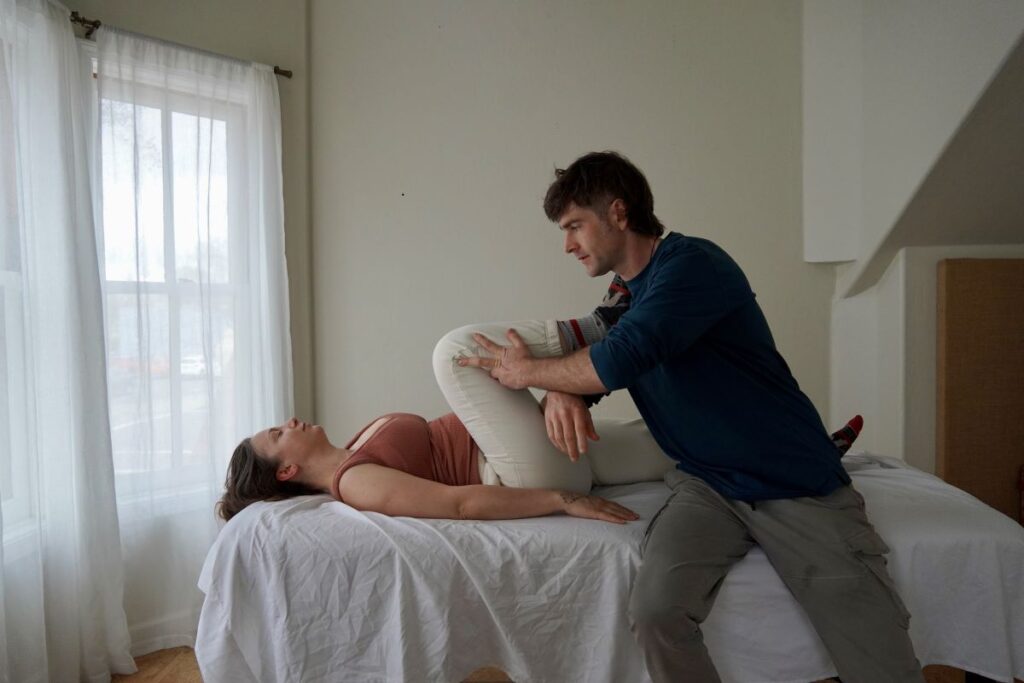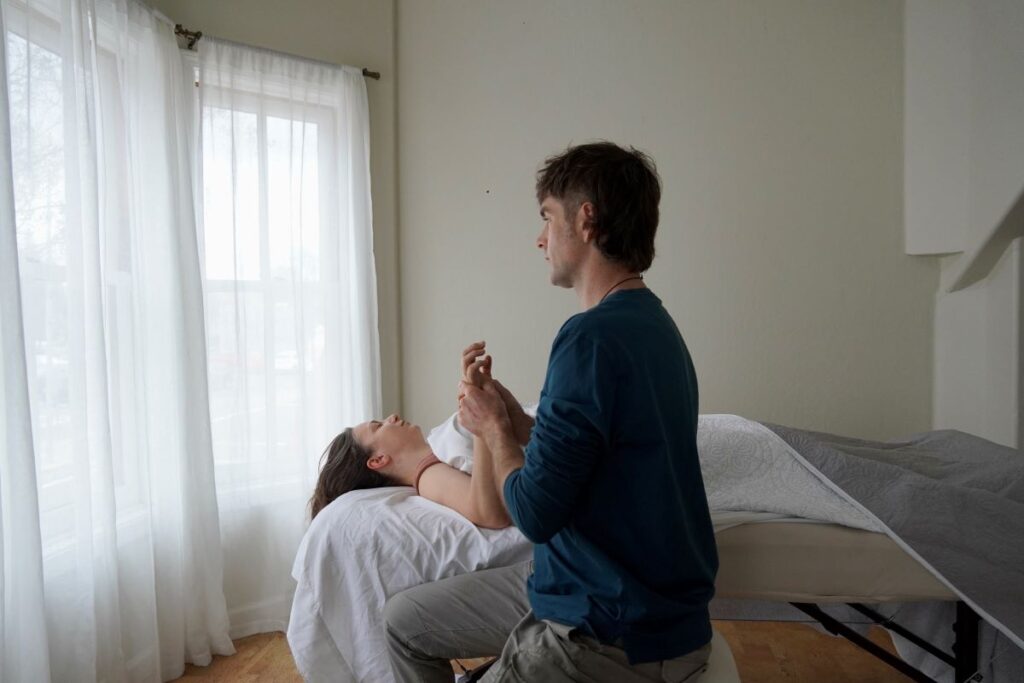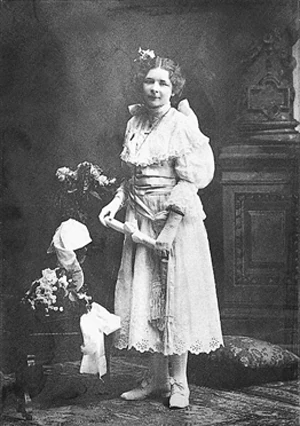WHAT IS ROLFING?
-Ashley l
-Sonya L
-cara w
WHAT IT IS
Rolfing influences postural changes in the body by manipulating the body’s myofascial system and influencing the body's nervous system.
WHAT IT ISN'T
Rolfing works to address the structural integration of your body, not the symptoms resulting from the body’s misalignment. The aim of Rolfing is to provide a more functional body for the long term; beyond the temporary ease of symptom relief.


What is Fascia?
Fascia is a three-dimensional network of connective tissue that covers the body’s muscles, bones, organs, and nervous system. Fascia is highly innervated with nerve receptors called mechanoreceptors that sense balance and posture
Fascia is a ubiquitous and continuous medium that contains, separates, and interconnects all of your other tissues and organs. It is also referred to as connective tissue. Dr. Ida P Rolf considered this system to be the “organ of structure” as it supports all the structures in the body. Fascia develops as early as the embryonic stage of life
Fascia is what gives the muscles and body its unique shape and dynamic support through it’s elastic properties. Fascia is stronger than muscle tissue, because of it’s elastic capacity for recoil. (capacity to lengthen and return without deformation) and it’s innate ability to store kinetic energy from muscle contraction. This is how athletes and performers at times can seemingly defy physics.
Fascia has an important role in immune system function (migration of immune cells which aid infections)
Fascia is a sensory organ, a network of connective tissue with 10x more sensory receptors (mechanoreceptors) than contractile muscle tissue, and it plays a key role in proprioception.
Proprioception is the ability to sense the body’s position and movement in space. Proprioception is important for balance and coordination, and it allows us to make effective movements, expressions and gestures. One can think of proprioception as ” the true sixth sense” or “the eyes of the body.” In origianl Latin, proprioception means, “to grasp oneself.” Famous neurologist Oliver Sacks defines it as ” the unconscious sense that allows you to move normally.”
Interoception: a branch of proprioception which refers to the perception of the body’s internal sensations. Interoception is essentially awareness of one’s own internal body state, our sense of the body’s own internal signals. The Enteric Nervous system (the brain of the gut) is an example of a branch of the nervous system that participates in sending sensory information (mechanical, chemical, thermal) from the gut to the central nervous system via the vagus nerve pathway, where ends up as embodied consciousness. This is itself an interoceptive process. While Interoception is just beginning to be understood, it is essential to our sense of embodiment, motivation and well being.
Exteroception: is a branch of proprioception which refers to the perception of external stimuli utilizing the 5 base senses (touch, sight, hearing, smell, taste)
How can we improve fascia health and physical wellbeing?
-
Fascia mobility
Improving fascia mobility can help enhance body awareness and movement control. Compression/tensional patterns have the potential to cause the epimysium of one muscle to form adhesions to its neighboring muscle, resulting in undifferentiated fascia. Rolfing® helps to lubricate and unglue these myofascial components and create more gooey fascia, bringing more horizontal organization and freedom for the fatigued tissues of the body.
-
Balance training
Balance training exercises, such as Yoga, Pilates, Gyrotonics, Qigong, Tai Chi, Martial Arts, even standing on one leg, can help improve proprioception. Professional athletic trainers utilize one legged stance exercises for top athletes to improve stability and balance.
-
Movement-based therapiesManual therapy and movement-based therapies such as Alexander, Feldenkrais, Rosen are all methods which can tremendously help improve fascia mobility and proprioception.
Jordan Shaffer

As a Certified Rolfer and over a decade of experience as Massage Therapist, has allowed me to notice and learn that bodywork often helps individuals make structural and functional changes to their everyday lives. My hope for my clients is to enable them to evolve into greater sesation and expression, and for the results of each session to stick, leaving feeling more nimble, balanced, and energetic in how they meet the world.
Rolfing Structural Integration is named after its creator, Dr. Ida P. Rolf. Dr. Rolf received her Ph.D. in biochemistry from Columbia University in 1920 and furthered her knowledge of the body through her scientific work in organic chemistry at the Rockefeller Institute. In her pioneering search for solutions to her own as well as her family members’ health problems, Ida examined many Holistic philosophies and health systems that studied the effect of structure on function. These included Hatha yoga, osteopathy, chiropractic, and the flourishing of the human potential movement.
Dr. Rolf combined her research with her scientific knowledge to stimulate a deeper appreciation of the body’s structural order resulting in the theory and practice of Rolfing. Now there are more than 2,200 Certified Rolfers worldwide. The techniques Dr. Rolf developed during 50 years of study and practice first received wide professional exposure at the Esalen Institute in California during the mid 1960’s. She then established the Rolf institute in Boulder, Colorado where she spent the last years of her life refining her methods and teaching them to other Rolf practitioners.


